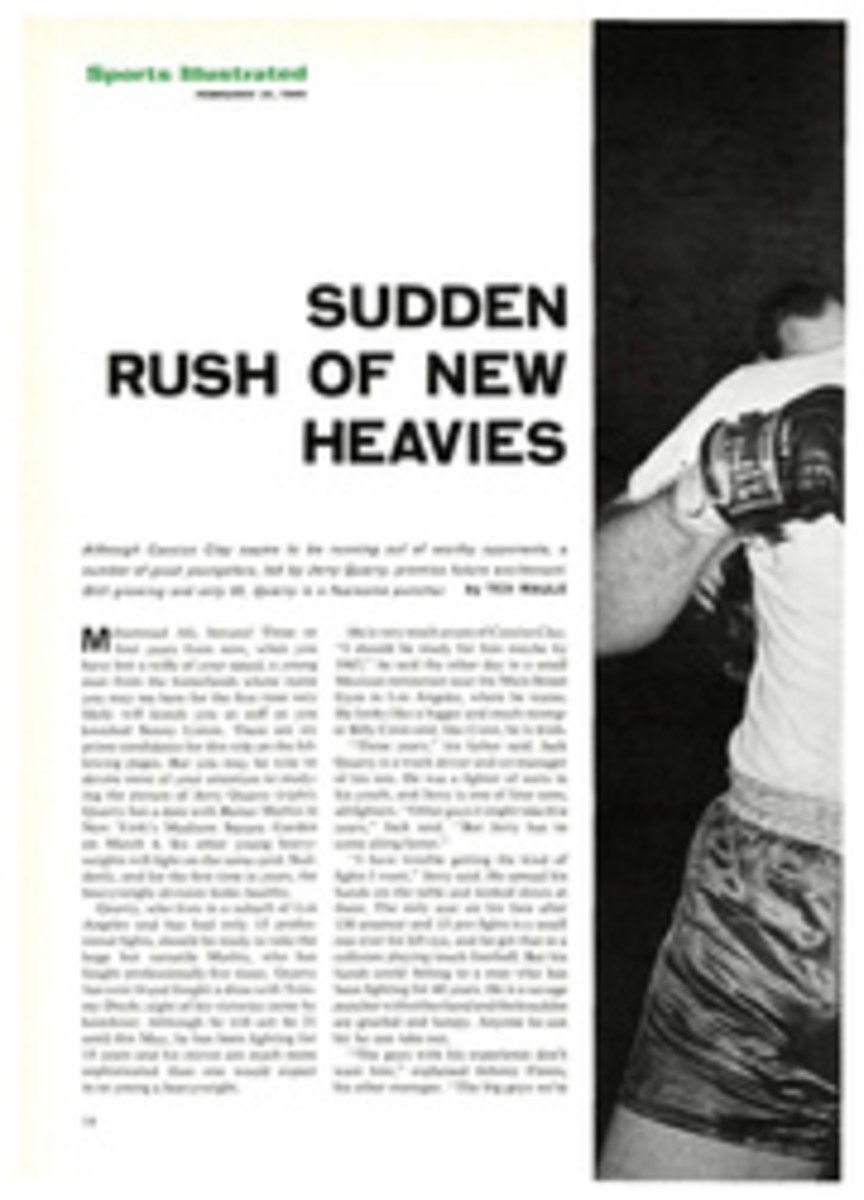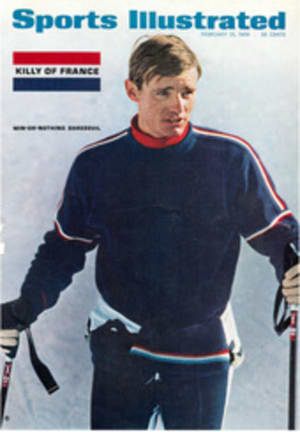
Legislative status for a victory at sea
California yachtsmen, particularly those from southern California, have lots of boats, perhaps even more than East Coast yachtsmen. They have big boats and little boats, boats of all shapes and rigs, and even boats kidnaped from the East, such as the 72-foot ketch Ticonderoga and the 72-foot yawl Baruna. Sometimes during the West Coast's almost endless racing season as many as 3,000 sailboats squeeze across starting lines in California waters. But bigger than the fleet itself is the aching desire of every California sailor to humble the haughty East. There is nothing, absolutely nothing, he would like better than to send a swift 12-meter to Newport, R.I. some summer and beat the boot tops off the Easterners for the right to defend the America's Cup, top prestige symbol in all yachting. They tried it without much luck with the revamped Columbia in 1964, and they'll try it again with the same boat in 1967. Meanwhile, they are doing their best to pour the prestige of the America's Cup into a shiny silver trophy all their own: the Congressional Cup.
The Congressional Cup was born in 1963. At that time a group of Long Beach Yacht Club members got together under the leadership of then Vice-commodore Robert Pierce and agreed to establish a new trophy for match racing—like the America's Cup only with a few differences. Instead of just two boats racing each other, 10 boats would compete in a whole round robin of match races. The boats would be identical ocean racers, and their skippers and crews would be culled from the best the West Coast had to offer. To give the Californians a worthy target to aim at, it was planned to invite some of the top skippers from the Midwest and South, along with a few prominent 12-meter men from the stuck-up East. As a final bit of polish for the trophy the Congress of the United States was asked to pass a special resolution endowing the deed of gift with all the necessary whereases and herewiths.
With all this accomplished, the new cup, full to the brim of instant status, was offered up for competition in 1965—but only one East Coast skipper showed up at Long Beach to race for it. Nevertheless, opined Commodore Pierce, "it was a spontaneous success," and everyone agreed—on the West Coast, particularly—that things would be better next time.
Two weeks ago the cup stood polished and ready in a case at the Long Beach Yacht Club for the second running of the series. If the number of first-rate sailors and gleaming, California-built Cal-40s on hand to compete was any indication things had indeed improved. Arthur Knapp, whose name is practically synonymous with East Coast sailing, was there to represent the Larchmont (N.Y.) Yacht Club. Skip Grow and Carter Sales of Detroit's Bayview Yacht Club were there to issue a challenge from the Midwest, Cal Hadden showed up to defend the honor of the Southern Yacht Club. The St. Francis Yacht Club's Dennis Jordan represented northern California. And, of course, back to defend his title was San Diego's Jerry Driscoll, once again at the helm of Mrs. Carol McCune's Blue Marlin, the boat he won the cup with last time out.
Dark-eyed, taciturn and modest, Jerry Driscoll tends to poke around a waterfront, peering at the big boats like some envious Sunday sailor. But he has already been chosen to command Columbia again in the West's next try for America's Cup honors. His only worthy rival for the Congressional Cup appeared to be the 12-meter veteran Knapp and theirs was the duel everybody looked forward to. Knapp and Driscoll were not scheduled to meet, however, until the second race.
The first race, on Thursday, featured Knapp, in his borrowed Dolly, vs. Harry Moloscho, who was sailing his own boat for the Long Beach Yacht Club.
"I hope Harry beats those awful Easterners," muttered one California lady loudly, as the Knapp-Moloscho duel began. "I don't see why they should come out here and win our cup." Moloscho did beat Easterner Knapp—so handily, in fact, that it rather took the edge off the next race up, the touted Knapp-Driscoll match.
Using every match-racing trick in his book, the famed eastern sailor did his utmost to better the western champion at the start of their race, but to no avail. Driscoll's boat was the faster, and before the first of the three marks was reached the race was all but over.
At the end of the first day, Driscoll's Blue Marlin was the only boat in the series with an untarnished record. Close behind, with one loss apiece, were five boats, including California's Holiday Too, sailed by young Scott Allan, a 19-year-old with more trophies in his locker than he knows what to do with. To encourage the winners and console the losers, the printed "social calendar" listed a Marguerita cocktail party that night, but the competition was so tense that only 28 worn-out crewmen showed up.
Only one up, with six races still to go on the second day, Driscoll could not afford to drop a match, but neither could any of his five rivals. In his race against Primer a, which already had lost two, Driscoll reached the first weather mark trailing by a minute and 45 seconds, and it began to look as if the champion would be knocked off by an also-ran. It was only the second time in two years that Driscoll had been led in the Congressional Cup series. But by the end of the third leg he was back on tracks, and Primera trailed Blue Marlin by more than a minute.
By the end of the sixth race only two of Driscoll's rivals had come through unscathed, Harry Moloscho and the ever-present Scott Allan. Ashore in the clubhouse, where radio contact was maintained throughout the series with the committee boat, the results were tabulated on a blackboard to the tune of shrieks from the Harry Moloscho fan club, which comprised most of the Long Beach Yacht Club membership. "Wow, wow-de-dow, whew," one woman gasped, as Harry won another race. "Let's put stars around his name," said another, scribbling a lot of squiggles around the letters spelling Moloscho.
With three races to win to preserve his perfect record and bothered by a set of sinuses that had kept him home from his San Diego shipyard, Jerry Driscoll puttered around Blue Marlin that night. Like many topnotch skippers, he is highly superstitious. "I'm scared," he said, "to change my underwear." But painstaking thoroughness is what really makes Jerry go. His sails, made by crewman Lowell North, are the best; his Barient winches hum rather than click; each of his crewmen is a specialist at his job (three of his crewmen will race aboard Columbia with Driscoll next year), and his whole boat is tuned as finely as a Stradivarius. Driscoll himself was tuned for this year's series to a pitch reflected by his dripping sinuses. The crucial pairing of Scott Allan and Driscoll came on Saturday's first race. Round and round they circled at the start, as though bound together by an invisible cord. Occasionally they would split, then draw back together again. The only sound was the swish of bow waves, the whirr of winches and the clatter of Dacron as they dueled for an advantage. Then, seconds before the start, Driscoll trapped his young adversary: Allan had an unattractive choice—he could drop down and foul Driscoll, thus disqualifying himself, or he could sail above the mark and start all over, thus handing Driscoll an instant lead. Scott's only hope was that Driscoll might make a serious mistake. That was like hoping that the sun would show that cloudy day. Jerry Driscoll just doesn't make mistakes. He went on to beat Allan and to win his last two races, keeping his undefeated record intact. All the Californians were happy as they gathered in the Long Beach Yacht Club's plush clubhouse to toast the final victory. They were happy because they had raced well against each other. They were happy because they had thoroughly put down the East. They were happy because they had come up with a real 12-meter-style champion in Jerry Driscoll. But the happiest Californian of all was Driscoll himself. At long last he considered it safe to go home and change his underwear.
PHOTO
SKIPPER JERRY DRISCOLL (20) SAILS UNDER RIVAL'S LEE ON A SPINNAKER REACH

